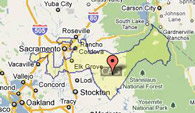If you're interested in the kinds of issues (translation: complaints) that various constituencies are bringing to the Citizens Redistricting Commission in regard to the first round of draft maps and its working draft of visualizations being floated, people are speaking up right now at today's meeting in Sacramento. (Update 9:45: The public comment period is over and the commission has moved on to the rest of its agenda.)
The commission was created through two propositions as an antidote to the notion that creating legislative districts has traditionally functioned as a means of protecting partisan interests, by investing politicians with the ability to lump together different populations that may share no other commonality than voting tendencies helpful to incumbents and one political party or another.
 Many of the changes to the prospective maps that are being sought by various populations have to do with the commission's "communities of interest" mandate, which charges the panel, made up of 14 private citizens, with creating legislative districts that group together voters who share the same, well..."interests." Proposition 20 defines a community of interest as a "contiguous population which shares common social and economic interests that should be included within a single district for purposes of its effective and fair representation.” Which leaves for room for a lot of subjectivity...
Many of the changes to the prospective maps that are being sought by various populations have to do with the commission's "communities of interest" mandate, which charges the panel, made up of 14 private citizens, with creating legislative districts that group together voters who share the same, well..."interests." Proposition 20 defines a community of interest as a "contiguous population which shares common social and economic interests that should be included within a single district for purposes of its effective and fair representation.” Which leaves for room for a lot of subjectivity...
A couple of weeks ago KQED's Cy Musiker interviewed Commissioner Vince Barabba about the criticism that's been levied at the commission related to its first round of maps, and about its decision to not release a second draft as it originally intended. Barabba also explained some of the constraints commissioners are working under when it comes to lumping together "communities of interest," not the least of which is the Voting Rights Act, which prohibits certain reapportionment strategies that otherwise might be considered. Listening to the interview, the process sounds a bit like trying to solve a Rubik's Cube -- get one side nice and squared away, only to see another completely disrupted.